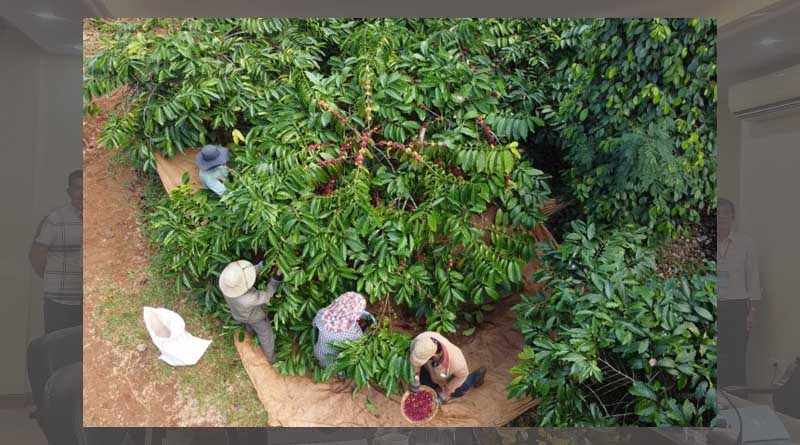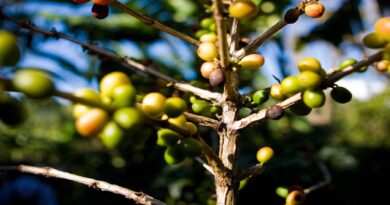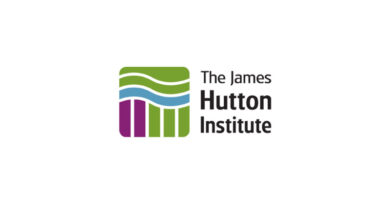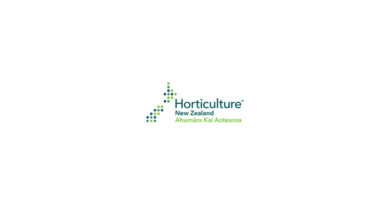Do not increase the coffee area, focus on replanting
28 June 2023, VN: Currently, Vietnam’s coffee area has exceeded the planned area, so in the next 10 years, the country will not expand the area but focus on replanting, improving productivity, and adding value.
The National Institute of Agricultural Planning and Projection (NIAPP) and the Department of Crop Production (Ministry of Agriculture and Rural Development), in collaboration with the Central Highlands provinces, have just organized a workshop on developing the project “Development of key industrial crops by 2030”.
The workshop aimed to collect comments from managers, scientists, experts, and enterprises in the production, processing, and export of agro-products to complete the report “The current situation and development orientation of rubber, coffee, pepper, and cashew trees by 2030”.
High productivity but still “premature”
Vietnam’s coffee area in 2022 reached 709,000 ha, an increase of 1.21 times compared to 2012. The average growth rate in the 2011–2022 period reached over 2%/year. The average productivity of the whole country in 2022 reached 29 quintals/ha, an increase of 1.24 times compared to 2011. The output increased from 1.277 million tons in 2011 to 1.886 million tons in 2022.
According to Mr. Le Ba Hoai, an expert from NIAPP, the area of over-15-year coffee in the Central Highlands is currently over 132,000 ha, accounting for over 50% of the region’s area. Of which, Dak Lak has the largest percentage of old and stunted, low-yielding coffee gardens in the country, with over 27% of old and stunted arabica coffee areas.
Coffee now is one of the industrial crops with high economic value, significantly contributing to people’s income as well as Vietnam’s export turnover. However, Vietnamese coffee products still have many shortcomings, such as: mostly raw processing; a small proportion of deep-processed and refined products; weak linkage and development cooperation according to value chain; geographical indications, trademark development and protection, and international intellectual property for coffee products have not been focused on; the application of 4.0 technology in production is still facing many difficulties; and the coffee industry is facing competition from many countries, such as Brazil, Laos, West African and East African countries, etc.
The current situation of coffee development is fragmented, spontaneous, and unplanned, with low investment, low quality, and poor cleanliness. Besides, due to the small orchard scale, it is very difficult to apply technical measures of intensive farming, plant protection, and product collection according to modern technology.
The tendency to over-exploit orchards by abusing chemical fertilizers, growth stimulants, and pesticides in an overdose to have immediate yield and output, but then the orchards quickly fade away, causing low and unstable economic efficiency
Focusing on replanting old and stunted coffee
Currently, thanks to export tariff preferences for processed coffee, many businesses have begun to pay attention and focus on investing in this field. Since then, businesses have contributed to increasing the added value of products and the export turnover of the whole industry. Coffee is one of 39 geographical indications in Vietnam committed to protection by the EU. This is the competitive advantage of Vietnamese coffee over competitors in the EU market.
According to Ms. Cao Phuong Nhung from NIAPP, Vietnam’s coffee area in 2022 reached 709,000 ha, an increase of 1.42 times compared to the approved plan in 2018. This has disrupted the planning and greatly affected the productivity, quality, and value of Vietnamese coffee.
Therefore, in the period up to 2030, Vietnam will not expand new planting areas but only develop areas with particularly suitable natural and socio-economic conditions on the basis of renovating existing coffee gardens and replanting coffee in old and stunted, low-yield areas.
In order to contribute to the development of Vietnam’s coffee industry, all levels and sectors have had many supporting mechanisms and policies, especially the socio-economic development strategy for the ten-year period of 2021–2030.
Specifically, the supporting policies include support for tax incentives, land leases, and crop restructuring; supporting varieties, replanting, fertilizers, and production according to standards; encouraging cooperation development and linkage to produce and consume coffee products; digital transformation in agriculture; supporting the integration of coffee development with other types of tourism; and supporting the establishment and protection of enterprises’ intellectual property in export markets.
According to NIAPP, the common goal of Vietnam’s coffee industry is to review and adjust the coffee growing area reasonably, shaping the scale from 660,000 to 690,000 ha by 2025 and from 610,000 to 640,000 ha by 2030
Authorities and businesses will increase investment, build and upgrade processing factories, and renew technological lines to improve quality and diversify products, thereby meeting the increasing requirements of the export market. The activities of improving quality, diversifying products, and effectively implementing the coffee value chain aim to maintain, expand, and increase the export value of over US$6 billion/year.
In which the agricultural sector’s development orientations for coffee to 2030 include orientation in terms of scale, area, output, and added value according to territorial space in order to promote irrigation in each region; orientation on production development associated with the 4.0 technology, digital transformation, and digital economy; developing the coffee processing and preservation industry; developing logistics; developing processing and export enterprises; developing coffee associated with tourism; and using by-products and finished products to add value for industrial crops
Also Read: FMC Corporation CEO Mark Douglas meets Indian Prime Minister Modi
(For Latest Agriculture News & Updates, follow Krishak Jagat on Google News)















